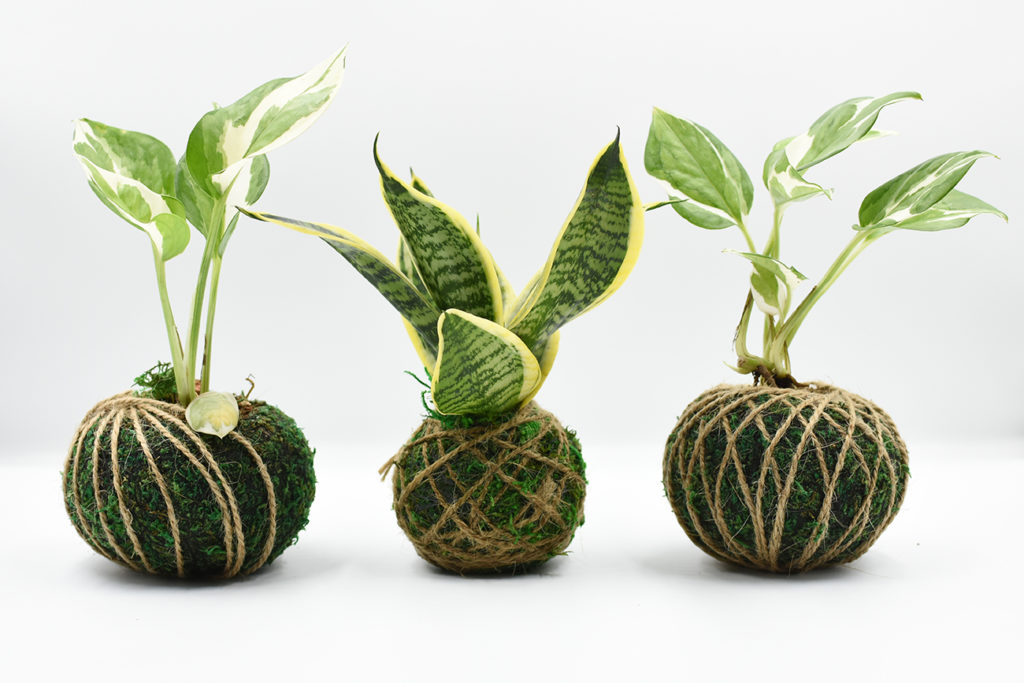
The Japanese Art of Kokedama
Kokedama (苔玉) or “moss ball”, is a literally a ball of soil, covered with moss and is used mainly as an ornamental plant and originates from Japan. “Koke” means moss while “dama” means ball. The art of kokedama is centuries old and is connected to the practice of bonsai.
Bonsai originated from the Chinese tradition known as penjing (miniature landscapes of trees and rocks). The art of bonsai focuses on the long-term practice of cultivating and shaping miniature trees that are grown in a container. The purpose of the art is to give the grower the opportunity to practice patience, effort, and ingenuity, and to give the viewer a chance to contemplate the artwork.
Japanese culture adapts the natural adeptness to apply the appeal of plants, flowers and nature in general, to express feelings and emotions. The people’s union with nature exhibits itself through intricate symbolism connected to Shinto and Buddhism , the two major religions in Japan. Among the two, Shinto is the predominant religion practiced by almost 80% of the population. Shinto (神道 Shintō, “way of the gods”) is the ethnic religion of Japan focusing on ritual practices carried out diligently to establish a connection between the ancient past and modern times. Buddhism also had great influence on the Japanese people throughout history. Its teachings emphasize the importance of meditation and experiences while living as opposed to inherited knowledge or theory such as in the scriptures.
Kokedama is the practice of taking the root of a plant and allowing it to grow from a mud ball coated with moss. The plant display has the moss ball as a focal point for a shaped tree or plant. It is then suspended from a string or secured to a platform with the plant growing from the ball of soil and moss. It is in essence a living planter that has unlimited ways to display whether it be a string garden or secured to a platform. A unique way to practice your cultivating skills.


